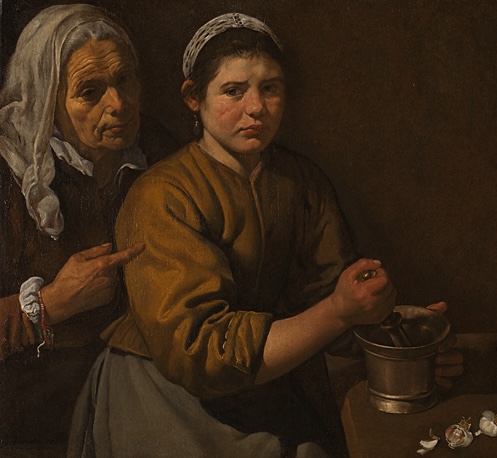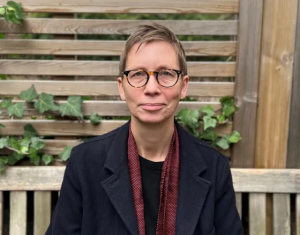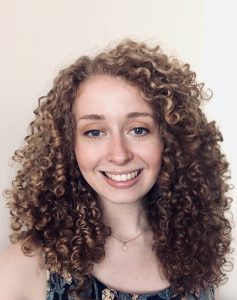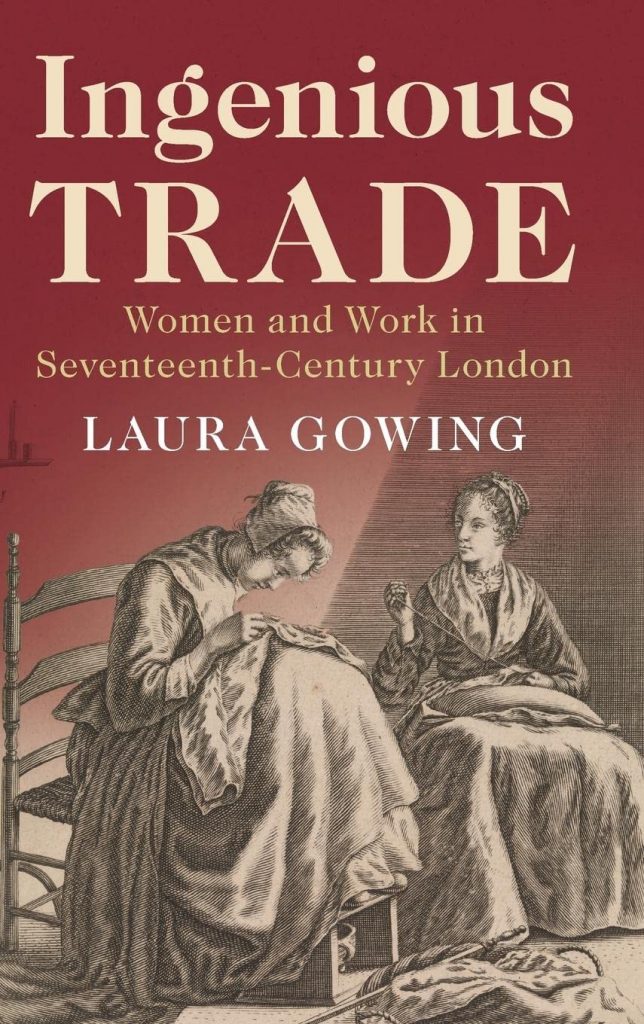
New Directions in the History of the Body – Holly Fletcher in Conversation with Laura Gowing
In this new series for The Bodies, Emotions and Material Culture Collective blog, Dr Holly Fletcher interviews leading historians on the subject of the history of the body. For this post she spoke to Professor Laura Gowing about her previous and current research, as well as future directions in the field.
 Laura Gowing is Professor of Early Modern History at King’s College London and a Fellow of the British Academy. She has published widely on early modern social and cultural history, including pioneering publications concerning gender, sexuality, and the body. Her book Common Bodies: Women, Touch and Power in Seventeenth-Century England (Yale, 2003) was awarded the 2004 Joan Kelly Memorial Prize by the American Historical Association. Her latest book Ingenious Trade: Women and Work in Seventeenth-Century London (CUP, 2022) was awarded the Social History Society’s Book Prize.
Laura Gowing is Professor of Early Modern History at King’s College London and a Fellow of the British Academy. She has published widely on early modern social and cultural history, including pioneering publications concerning gender, sexuality, and the body. Her book Common Bodies: Women, Touch and Power in Seventeenth-Century England (Yale, 2003) was awarded the 2004 Joan Kelly Memorial Prize by the American Historical Association. Her latest book Ingenious Trade: Women and Work in Seventeenth-Century London (CUP, 2022) was awarded the Social History Society’s Book Prize.
 Holly Fletcher is a Postdoctoral Research Associate at the University of Manchester on the Wellcome Trust funded project ‘Sleeping well in the early modern world: an environmental approach to the history of sleep care’. Her work focuses on the history of the body and its entanglements with the material world and her research has been published in leading journals including Gender & History, German History, and Food & History. Her article ‘“Belly-Worshippers and Greed-Paunches”: Fatness and the Belly in the Lutheran Reformation’ won the 2021 German History Article Prize.
Holly Fletcher is a Postdoctoral Research Associate at the University of Manchester on the Wellcome Trust funded project ‘Sleeping well in the early modern world: an environmental approach to the history of sleep care’. Her work focuses on the history of the body and its entanglements with the material world and her research has been published in leading journals including Gender & History, German History, and Food & History. Her article ‘“Belly-Worshippers and Greed-Paunches”: Fatness and the Belly in the Lutheran Reformation’ won the 2021 German History Article Prize.
Holly Fletcher: Twenty years ago you published the ground-breaking monograph Common Bodies: Women, Touch and Power in Seventeenth-Century England. This work was pioneering in uncovering the disciplining and regulation of women’s bodies in the early modern period, including a focus on the significance of physical touch for powers of control. You described the starting point for this study as seeking a wider definition of ‘the body’ than one merely encompassing medical discourses and argued for an integrated view of the body’s cultural construction and corporeal experience. Do you feel that this wider definition of the body has been successfully taken up by historians? And if you were to write this work today, is there anything you would add to, or change about, your approach to embodiment?
Laura Gowing: The field has moved so fast in the last twenty years. We’ve seen a real shift in understandings of sex and gender, both inside and outside the academy, and that’s brought a wider set of transformations in the concerns of feminist history and history of the body. I hadn’t anticipated how much the project I started would have to say about physical touch, and I do think that’s been taken up, alongside a concern with gesture, the senses, and material histories like those of the bed and clothes. The categories of cultural construction vs corporeal experience feel very much of their time, now – but they are also part of an enduring discussion in classrooms and amongst historians. One of the effects of the Covid pandemic on historians was to shut off students of all levels from archives, pushing people towards printed material, so that’s made looking for the kind of material I drew on harder again; sensory history also often tends towards the cultural approach, but I think as historians we are getting more sophisticated at reconstructing subjectivities (work on sleep might be one example here). How would I change it? I might work towards a fuller theorisation of power, touch and the body – what is the discipline that women are enforcing? I’d want to look at bodies whose sex is called in question, too.
HF: Recent scholarship concerning early modern bodies (such as that of Pamela Smith, Ulinka Rublack, Marta Ajmar, Evelyn Welch, Stefan Hanß, and others) has emphasised the significance of hands-on learning and embodied knowledge in this period. I wonder whether you consider the tactile nature of women’s bodily regulation, which you uncovered in Common Bodies, to be reflective of a broader contemporary engagement with matter and the physical?
LG: Yes, that’s a good way of looking at it. Skill is another. Looking at the legal context makes it evident that women’s readings of bodily matter are part of medical and technical skillsets that we haven’t always recognised – and that the institutions of regulation drew on those skills for a long time. Research on artisanship and women’s medical and caring work is part of that broader spectrum: now that women’s work is better theorised, that adds to the context too. Archival work has also uncovered some amazing language which really helps flesh out how bodies felt– who can forget Mary Toft’s description of her pains as like the tearing of brown paper? (Karen Harvey, ‘What Mary Toft felt’ in HWJ 80 (2015)).

HF: Your latest book Ingenious Trade: Women and Work in Seventeenth-Century London examines the examines the experiences of female apprentices and their mistresses, including a consideration of ‘the body in service’. What do you think the history of the body has to offer histories of labour?
LG: The gendered history of the body and the bodily history of labour have not been well integrated: there’s room for much more thinking there. New work on disability suggests occupational disease and damage as one area for consideration: the eyes of lacemakers, the hands of spinsters. The history of the body has been very deeply theorised, and very reflective about language, subjectivity, selfhood, gender, and the interplay of experience and culture. The history of labour in the early modern period has had less to say in relation to those topics, so there is room for much cross-fertilisation there. Childbirth and care are obvious starting points for connecting embodiment and labour, but artisanal workshops and street selling work too.
HF: How do you see the field of body history developing in the future? What new directions do you anticipate and/or hope for the history of the body?
LG: I hope it’ll keep drawing on archives, those that are still being discovered, as well as the richness of the ones we know, and drawing in new scholars with different ideas!. Violence and racialisation are clearly critical areas for further work, where we can learn both to recuperate and to resist the archival material. The boundaries of body history will expand, too, towards the wider environment and across global connections. The best new perspectives have the capacity to transform our view of the early modern world. It’s been particularly interesting teaching about the body post-Covid: the current generation of students have experienced the transformation of bodily gestures, the fear of infection, the pain of isolation, and sensory loss in ways that make some early modern experiences very understandable.
Featured image: Detail from Diego Velázquez, ‘Kitchen Scene with Christ in the House of Martha and Mary’, oil on canvas, 60x103.5cm, c. 1618 © The National Gallery, London. Cover Image for Laura Gowing, Common Bodies: Women, Touch, and Power in Seventeenth Century England (Yale, 2003).






0 Comments